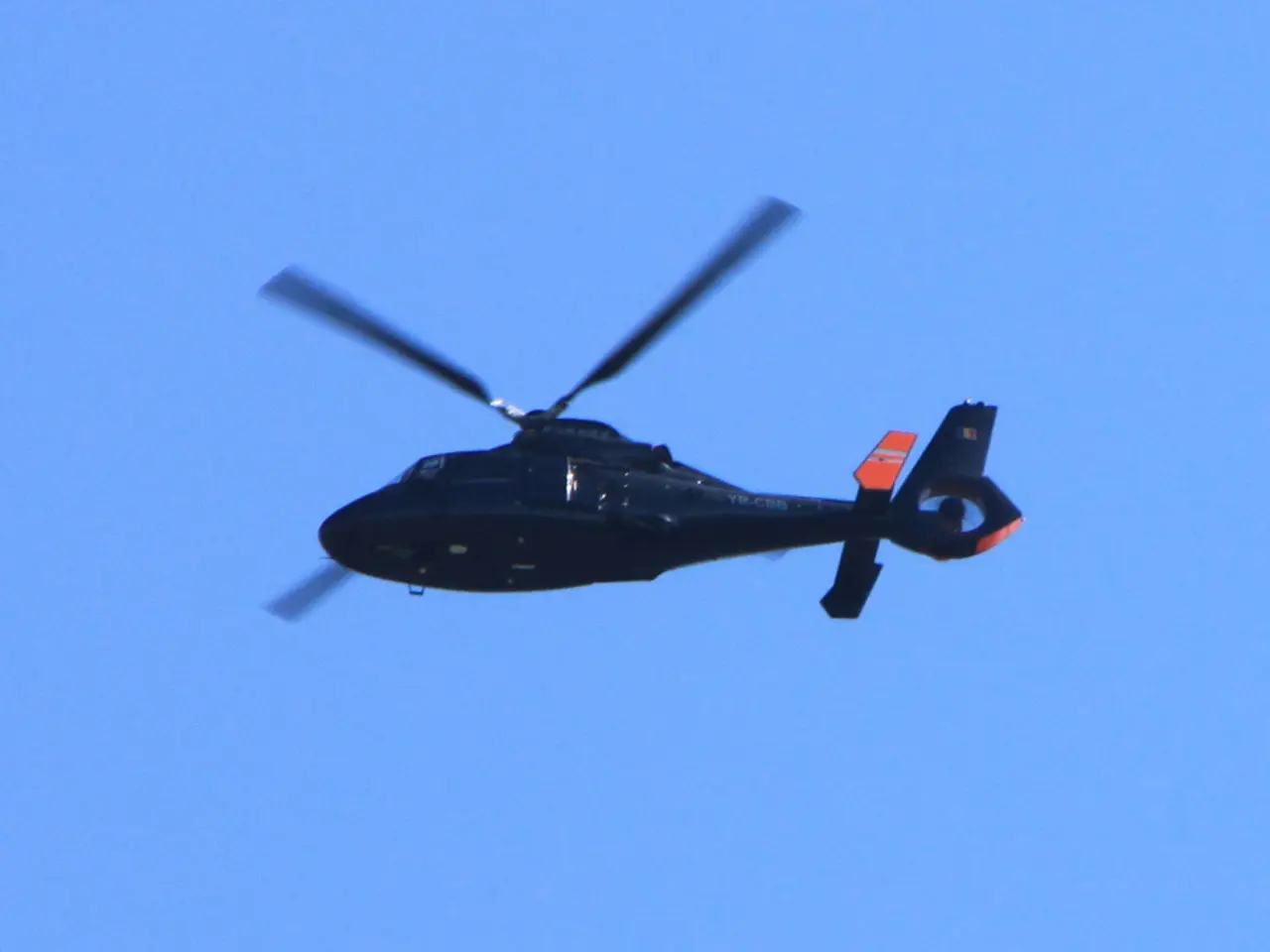China trials an UFO-resembling drone, mirroring the 2015 US Navy's 'Gimbal' incident observation
In an exciting development, Chinese company EHang, specializing in autonomous aerial technology and pilotless Electric Vertical Take-off and Landing (eVTOL) aircraft, has unveiled a next-generation VTOL drone. This innovative drone, inspired by the mysterious Gimbal UFO recorded in a 2015 encounter, is designed to resolve a long-standing trade-off in aviation.
The unique design of the drone blends the advantages of multirotor drones and fixed-wing aircraft. During vertical take-off and landing, four rotors mounted at wing junctions provide steady lift and stability. As the drone transitions into forward flight, the hybrid wing generates substantial lift through circulation control and enhanced pressure differentials. This allows the aircraft to hover and land in tight spaces, much like multirotor drones, while maintaining the efficiency and range of fixed-wing aircraft.
The airframe resembles a flying spindle, with an elliptical, closed-loop wing that integrates a straight central section and vertical stabilizers. This elliptical wing design is claimed to bridge the gap between the two, offering the best of both worlds.
Researchers at Zhengzhou University of Aeronautics have also been working on VTOL drones. Their efforts have resulted in a prototype that flew steadily during several test runs, with the wing effectively managing airflow and maintaining control even at steep angles of attack. Post-flight data confirmed significant gains in lift efficiency, enabling stable performance at low speeds and high angles of attack.
However, the team acknowledges that there is still room for improvement. They are working to reduce the aerodynamic drag caused by the unique shape of the ring wing and refining control algorithms to prevent inefficient flying that increases drag.
The potential applications of this new VTOL drone are vast. It could be used for battlefield surveillance, maritime reconnaissance, environmental monitoring, and emergency response. Additionally, it could be deployed for missions such as water-quality sampling, rapid delivery of supplies to remote areas, and search-and-rescue operations in coastal environments.
EHang has partnered with China Road and Bridge Corporation (CRBC) to expand and certify their VTOL drones internationally. This collaboration aims to bring this groundbreaking technology to markets around the world.
Meanwhile, Chinese scientists are also exploring more streamlined VTOL designs for naval deployment, including drones capable of launching from warships. This could revolutionize naval operations, providing a versatile and efficient means of aerial surveillance and support.
In simulations and test flights, the drone's lift curve slope was more than double that of conventional straight wings, indicating a significant improvement in lift efficiency. As this technology continues to evolve, it promises to reshape the future of aviation, bridging the gap between traditional drones and fixed-wing aircraft.
Read also:
- Peptide YY (PYY): Exploring its Role in Appetite Suppression, Intestinal Health, and Cognitive Links
- Toddler Health: Rotavirus Signs, Origins, and Potential Complications
- Digestive issues and heart discomfort: Root causes and associated health conditions
- House Infernos: Deadly Hazards Surpassing the Flames






